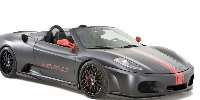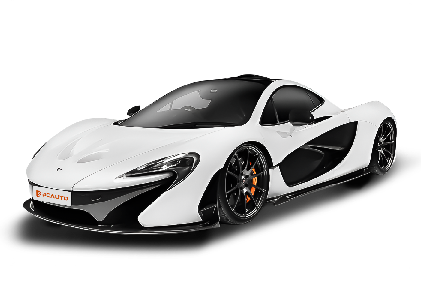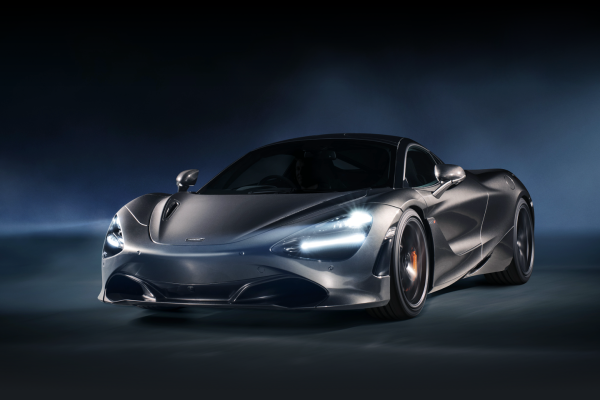Q
Is McLaren P1 faster than F1?
The McLaren P1 is definitely faster than the iconic F1, and that's mostly down to over a decade of technological advancements. The P1's hybrid setup cranks out a combined 916 horsepower, rocketing from 0-100km/h in just 2.8 seconds, with its top speed electronically capped at 350km/h. Back in the '90s, the F1 made a name for itself with that naturally aspirated 6.1-liter V12 and featherweight body, but its 627hp output and 3.2-second sprint just can't keep up. Still, the F1 still holds the record for the fastest naturally aspirated production car ever, hitting an insane 386km/h. For Malaysian petrolheads, both cars represent McLaren at the top of its game – the P1 points to the future of hybrid hypercars, while the F1 stands as an eternal classic of pure mechanical beauty. It's worth noting though, Malaysia's hot and rainy climate really puts these high-performance machines to the test when it comes to cooling and tire grip, so you've got to stay on top of maintenance if you're driving one daily.
Special Disclaimer: This content is published by users and does not represent the views or position of PCauto.
Related Q&A
Q
When was McLaren P1 released?
The McLaren P1 stands as one of the most talked-about hybrid hypercars to ever hit the scene. Launched back in 2013 as the spiritual successor to the legendary McLaren F1, it represented the absolute cutting edge of automotive engineering at the time. Under the hood (well, behind the driver actually), you've got a beastly 3.8-liter twin-turbo V8 paired with an electric motor, cranking out a combined 903 horsepower. That translates to a blistering 0-100 km/h sprint in just 2.8 seconds, and while its top speed is electronically capped at 350 km/h, there's no denying the raw speed on tap.
What really sets the P1 apart is its advanced aerodynamics – think active rear wing and adaptive suspension systems that work in harmony to keep this rocket glued to the tarmac, even when pushing those extreme limits. For Malaysian petrolheads, the P1 isn't just a car; it's a dream machine. Its exclusivity and mind-blowing performance make it the ultimate trophy for collectors and hypercar fanatics alike. Sure, that eye-watering price tag and limited production run (only 375 units worldwide) mean it's out of reach for most, but there's no arguing its place in automotive history.
Beyond its own legacy, the P1 paved the way for McLaren's future hybrid endeavors, like the Speedtail and Artura, proving the brand can blend environmental consciousness with mind-bending performance in one seriously impressive package.
Q
When was the McLaren P1 released?
The McLaren P1 stands as an iconic hybrid hypercar, first unveiled back in 2013. As a flagship model for the McLaren brand, it's a beast that marries cutting-edge F1 racing tech with a green mindset. Under the hood, you've got a 3.8-liter twin-turbo V8 engine paired with an electric motor, cranking out a combined 903 horsepower. That translates to a blistering 0-100 km/h sprint in just 2.8 seconds, and a top speed electronically capped at 350 km/h.
Only 375 units of this machine were ever built worldwide. Thanks to its mind-blowing performance and forward-thinking hybrid tech, it's become the stuff of dreams for collectors and car fanatics alike. For Malaysian petrolheads, the P1 isn't just a showcase of engineering excellence; it also highlights the supercar industry's steps toward cutting emissions, even if it comes with a sky-high price tag and is as rare as hen's teeth. Despite that, its reputation globally is absolutely stellar.
If Malaysian car enthusiasts want to catch a glimpse of this legend, they'll probably have to keep an eye on international motor shows or private collection events—this beauty is extremely hard to spot in the local market.
Q
When was the McLaren P1 made?
The McLaren P1 stands as an iconic hybrid hypercar, rolling off the production line from 2013 to 2015 with a strict global limit of just 375 units. Under its sculpted hood lies a potent hybrid setup: a 3.8-liter twin-turbo V8 engine paired with an electric motor, churning out a combined 903 horsepower. This translates to blistering performance – 0-100 km/h in a mere 2.8 seconds and a top speed of 350 km/h – showcasing McLaren's masterful blend of raw performance and cutting-edge green technology.
For Malaysian petrolheads, the P1 isn't just a hypercar legend; it's a pioneer in hybrid tech. Its KERS energy recovery system later trickled down to more accessible McLaren models, like the Sports Series range. Sure, you don't spot P1s cruising Malaysian streets every day, but their status among global collectors and supercar enthusiasts is off the charts – and their resale values? They stay sky-high.
It's worth noting McLaren's been ramping up efforts in Southeast Asia lately, Malaysia included. So, here's hoping we'll see more of their limited-edition beasts making their way to local shores. Definitely something for us car fans to keep our eyes peeled for.
Q
How fast is McLaren P1?
The McLaren P1 is an absolute beast of a hybrid hypercar with mind-blowing speed. It tops out at 350 km/h and rockets from 0-100 km/h in just 2.8 seconds, serving up some serious performance credentials. That punch comes from its 3.8-liter twin-turbo V8 paired with an electric motor, cranking out a combined 916 horsepower. For Malaysian petrolheads, the P1 isn't just a showcase of cutting-edge engineering—it's right at home stretching its legs on premium local circuits like Sepang International Circuit, where you can really feel its raw capability. What's cool too is how the P1's hybrid setup signals the supercar world's shift toward greener tech. Sure, these machines might not be the most practical daily drivers on Malaysian roads, but their blend of innovation and outright speed keeps car enthusiasts talking nonstop. If hypercars get your engine revving, dive into other models in this league—check out how they balance power with efficiency, or how those sleek aerodynamic designs keep them glued to the tarmac at silly speeds.
Q
How much horsepower does a McLaren P1 have?
The McLaren P1, an iconic hybrid hypercar, pairs a 3.8-liter twin-turbo V8 with an electric motor, churning out a combined 903 horsepower and 900 Nm of torque. It blasts from 0-100 km/h in just 2.8 seconds, with top speed electronically capped at 350 km/h. Launched in 2013 with a limited run of 375 units, its innovative IPAS (Instant Power Assist System) and active DRS rear wing seriously up its dynamic game, while the hybrid setup adds an eco-friendly edge too. For Malaysian enthusiasts, the P1's extreme performance stays rock-solid even in tropical heat, thanks to its advanced thermal management. Plus, that carbon fiber monocoque chassis handles our twisty local roads like a dream. Let's not forget—it's part of the "Holy Trinity" of hybrid hypercars alongside the Ferrari LaFerrari and Porsche 918 Spyder, representing the absolute pinnacle of automotive engineering. Even though all new units are long sold out, it remains a highly coveted gem in the global collector's market.
Q
What engine does McLaren P1 have?
The McLaren P1 is powered by a 3.8-liter twin-turbocharged V8 petrol engine paired with an electric motor, forming a hybrid powertrain that delivers a staggering combined output of 916 horsepower and a peak torque of 900 Newton-meters. This setup isn't just about mind-blowing acceleration—hitting 0-100 km/h in a mere 2.8 seconds—it's also a showcase of McLaren's engineering brilliance in hybrid technology. What's really cool here is that the P1's electric motor isn't a standalone driver; instead, it works in tandem with the engine, chipping in extra oomph through the Instant Power Assist System, or IPAS. That was a pretty innovative move in the supercar world back then.
For Malaysian petrolheads, spotting a P1 on local roads is like finding a needle in a haystack, but its tech DNA is all over later McLarens like the Senna and Speedtail. More than that, the P1's hybrid system was a clear signal that even supercar brands were getting serious about the whole eco-friendly shift. And hey, even when the mercury's soaring—like it does here in Malaysia—its clever cooling setup keeps everything running like a dream. For us folks who live and breathe high-performance machines, the P1 stands as a fascinating example of how hybrid tech has evolved in the supercar realm.
Q
How much is McLaren P1?
So, let's talk about the McLaren P1's price tag in Malaysia. This limited-production hybrid hypercar rolled out of the factory with an original sticker price of around $1 million. But here's the thing – only 375 were ever made, and they sold out ages ago. So now, on the used market, you're looking at a price that dances around based on condition, mileage, and just how rare the specific example is. Generally, you'd be shelling out anywhere from $2 million to $3 million. And if you're bringing one into Malaysia? You've got to factor in those extra costs: import duties (which can hit over 100% depending on engine displacement), registration fees, and insurance – they all add up.
Now, the P1, when it dropped in 2013, was a total game-changer for "Hyper-GT" cars. Under the hood (well, behind the seats), there's a 3.8-liter twin-turbo V8 paired with an electric motor, cranking out a combined 903 horsepower. That translates to a blistering 0-100km/h sprint in just 2.8 seconds. Tech-wise, its innovative IPAS (Instant Power Assist System) and that Monocage carbon fiber monocoque chassis are still benchmarks the industry looks up to.
But here's the heads-up for Malaysian buyers: our hot and humid climate can be tough on high-performance rides like this. The battery pack and cooling systems really need some extra TLC. So, if you're thinking about picking one up, go through a reputable specialist importer to make sure the car's got all the local certifications sorted – like the VTA approval. And don't forget to budget for maintenance. Keeping a P1 in tip-top shape here? You're probably looking at around RM150,000 to RM200,000 a year. Just part of the privilege of owning a legend, right?
Q
Which car is the world's safest?
Based on the latest data from leading global safety assessment bodies like Euro NCAP and IIHS, some of the safest cars you can buy right now include models like the Volvo XC90, Mercedes-Benz EQS, and Tesla Model Y. These rides have all scored the full five-star rating in crash tests and come packed with advanced active safety tech – think automatic emergency braking, lane keeping assist, and blind spot monitoring. That makes them especially well-suited for Malaysia's rainy weather and tricky road conditions, where staying safe behind the wheel is a top priority.
But here's the thing – a car's safety isn't just about its design. Driver awareness plays a huge role too. Simple stuff like buckling up properly and using child safety seats correctly can drastically cut down accident risks. For Malaysian car shoppers, beyond just looking at crash test ratings, it's smart to consider local-specific features. Things like tyres that handle tropical downpours well, a robust cooling system for our hot climate, and models that meet ASEAN NCAP standards. These little details can really make a difference in keeping you safe on the road.
Oh, and let's not forget regular vehicle maintenance. Making sure your brakes are in tip-top shape and your airbags are functioning properly is another key part of staying safe out there.
Q
Can a car reach speeds of 400 miles per hour?
Your average production car on the market these days tops out somewhere between 250 and 300 km/h. Hitting 400 mph (that's roughly 643 km/h) though? That's a whole different ballgame—you're talking purpose-built speed demons or heavily modified monsters. We're talking mega-horsepower engines, featherlight bodies, and aerodynamics so sharp they could cut the wind. Think land speed record breakers like Thrust SSC and Bloodhound LSR, machines that've broken the sound barrier or come tantalizingly close. But let's be clear: these are experimental beasts, not something you'd use to run errands.
For Malaysian petrolheads, sure, local speed limits and traffic conditions mean you'll never get to unleash that kind of velocity on the road. But digging into the tech behind these extreme vehicles? That's still super fascinating. Like, how do they use special tires, advanced stability systems, and cutting-edge fuel management to handle the chaos of those mind-bending speeds? And it's always cool to keep an eye on international events like drag races or salt flat speed challenges—they're like a showcase of the absolute bleeding edge of automotive engineering.
Q
Which car is the fastest in the world?
Right now, the fastest production car in the world is the Bugatti Chiron Super Sport 300+. This beast can hit a mind-blowing 490 km/h, thanks to its 8.0-liter quad-turbo W16 engine cranking out a massive 1,600 horsepower, and aerodynamics tweaked specifically for ultimate speed.
For Malaysian car enthusiasts, while these hypercars are pretty rare sights on local roads, there are still some solid performers that make more sense here – think Proton X50 and Perodua Ativa. They’re better suited to our local driving conditions and daily needs.
Sure, hypercars are all about that incredible speed, but when you’re actually behind the wheel, safety and road conditions can’t be ignored. Malaysia’s highway speed limits are generally 110 km/h, so even if you’ve got a high-performance machine, sticking to the rules is a must.
On top of that, the electric vehicle scene is throwing up some serious contenders too. Take the Tesla Roadster, for example – it rockets from 0-100 km/h in just 1.9 seconds. That really shows how quickly EV tech is advancing, and it might just smash more speed records in the future.
Popular Cars
Model Year
Car Compare
Car Photo
Latest Q&A
Q
Does the 2019 Golf GTI have a timing belt or chain?
The 2019 Golf GTI uses a timing chain instead of a timing belt—a design that offers better durability and lower maintenance costs. Typically, a chain lasts as long as the engine itself and rarely needs replacement, whereas a belt requires inspection or replacement every 60,000 to 100,000 km. If neglected, a worn belt can snap and cause severe engine damage.
VW’s EA888 engine family has long relied on chain-driven systems, which are relatively quiet and highly reliable. That said, it’s crucial to periodically check the tensioner’s condition. Some earlier models experienced timing issues due to tensioner design flaws, but this was addressed in the 2019 version.
For performance enthusiasts, a chain system handles high-revving stress better, making it a common choice for hot hatches like the GTI. For daily driving, just stick to VW 50400/50700-spec oil as recommended in the manual—proper lubrication keeps the chain system healthy long-term.
One heads-up: If you hear noticeable metallic rattling near the front of the engine, have the guides or tensioner inspected ASAP. Unlike the telltale belt squeal before failure, this noise is a classic sign of chain-related wear.
Q
What is the recall on the 2019 GTI?
The 2019 Volkswagen Golf GTI was subject to a safety recall addressing two potential issues. First, the fuel pump control unit software could malfunction, potentially causing engine stalling in rare cases. Second, some vehicles might have rear suspension stabilizer link bolts that weren't tightened to specification, posing a loosening risk. Owners can visit authorized dealers for free software updates or bolt retightening.
These proactive recalls demonstrate Volkswagen's commitment to safety. Dealers often handle outstanding recall items during routine maintenance.
For performance-oriented models like the GTI, it's wise to go beyond recall checks. Pay close attention to the turbo system, DSG transmission fluid, and brake wear—these components endure more stress during spirited driving. If warning lights appear or you notice unusual noises, get a professional inspection promptly. Keeping the car in top shape ensures you can fully enjoy its dynamic capabilities.
Q
Does the 2019 GTI require premium gas?
The 2019 GTI does recommend using high-octane fuel (typically RON 95 or above). Its 2.0L turbocharged engine has a relatively high compression ratio, and premium gas ensures optimal performance while reducing knock risk. It also helps maintain engine cleanliness and long-term reliability.
While the car may tolerate lower-octane fuel (like RON 92), you’d see slightly reduced power output and fuel efficiency. Over time, it could also affect engine longevity. Turbocharged engines are particularly sensitive to octane ratings since turbos generate higher heat and pressure—high-octane fuel handles these conditions better.
Mixing different fuel grades occasionally won’t hurt, but sticking to the manufacturer’s recommendation is ideal. Also, periodic fuel additive treatments can help clean carbon buildup, especially for direct-injection engines.
One more thing: even with the same octane rating, fuel additive packages vary by brand. So, picking a reputable gas station matters too.
Q
How long will a 2019 GTI last?
The lifespan of a 2019 GTI largely depends on maintenance and driving habits. With regular oil changes, transmission fluid replacements, and avoiding aggressive driving, it can easily clock over 200,000 kilometers—or even more. Its 2.0T engine and DSG gearbox are proven combos, and as long as you stick to the factory service schedule, mechanical reliability won’t be an issue.
Just keep in mind: turbocharged engines demand extra care. Always use the right spec full-synthetic oil and monitor the cooling system. Climate plays a role too—hot, humid conditions mean paying extra attention to rubber seals and electronics. Every 50,000 km, have the timing chain and high-pressure fuel pump inspected (key items for turbos).
Driving style matters. Don’t redline it constantly, and let the engine warm up properly after cold starts. Rustproofing helps long-term durability, so regular underbody washes are smart. Nail these details, and this car’s built to last.
Q
How fast is the 2019 GTI?
The 2019 GTI truly delivers when it comes to performance. Under the hood lies a punchy 2.0-liter turbocharged four-cylinder, churning out 228 horsepower and 350 Nm of torque. Whether you opt for the engaging 6-speed manual or the lightning-fast 7-speed DSG, this hot hatch rockets from 0-100 km/h in just 6.3 seconds, with an electronically limited top speed of 250 km/h.
What really sets the GTI apart is its razor-sharp handling. The sport-tuned suspension and electronic differential lock work together to deliver precise steering and rock-solid cornering stability. It’s the perfect blend of everyday practicality and proper driver’s car thrills—a well-rounded hot hatch in every sense.
For enthusiasts, the GTI’s tuning potential is massive. Many owners go for ECU remaps or intake/exhaust upgrades to squeeze out even more power. Just remember to keep things street-legal—safety and compliance should always come first. Around here, these pocket rockets have a solid following, and it’s easy to see why.
View More



















Pros
Cons